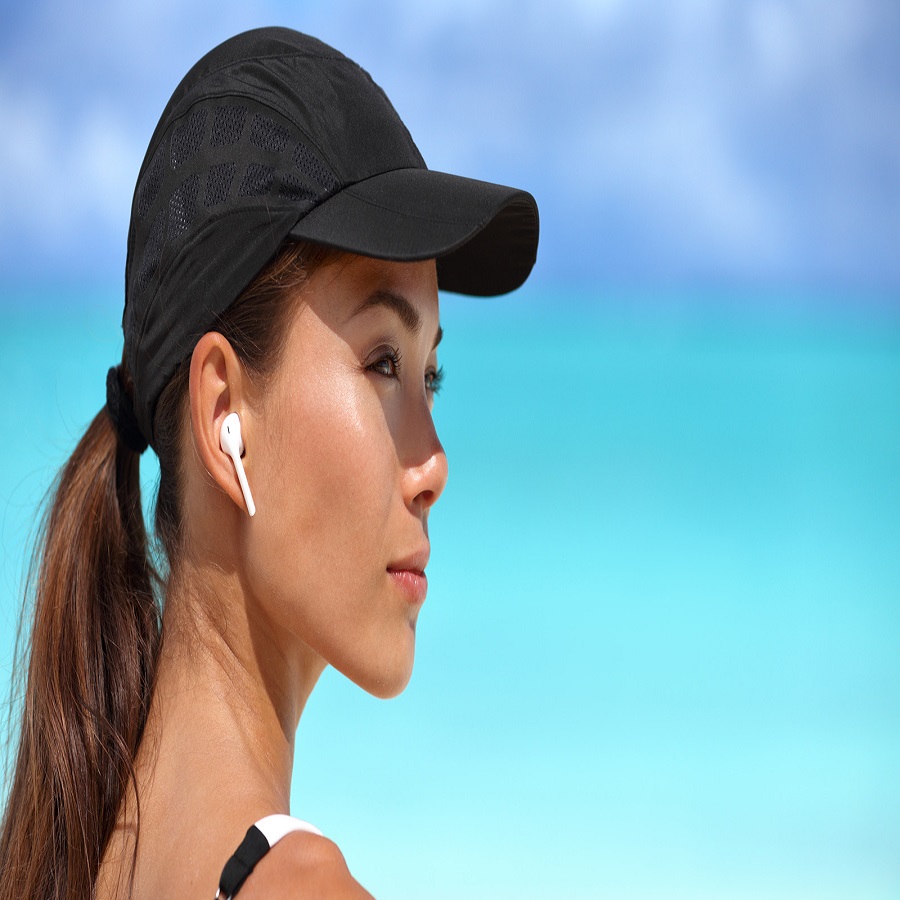Introduction
Is wearing a hat everyday bad for your hair – Wearing a hat can serve many purposes—protection from the sun, a fashion statement, or simply a practical solution for a bad hair day. However, one common concern among hat enthusiasts is whether wearing a hat daily might have adverse effects on hair health. In this exploration, we’ll investigate the relationship between hat-wearing and hair health, considering various factors including hair loss, scalp health, and style choices.
The Myths and Facts About Hats and Hair
- Myth: Hats Cause Hair Loss
One of the most pervasive myths surrounding hats is that they cause hair loss. The truth is a bit more nuanced. Hair loss is generally a result of various factors such as genetics, hormonal changes, nutritional deficiencies, and overall health. While wearing a hat itself does not cause baldness, certain behaviors associated with frequent hat-wearing can contribute to unhealthy hair. - Friction and Hair Breakage
If a hat fits too tightly or is made from rough materials, it might cause friction against the hair, leading to breakage. Constant rubbing can weaken the hair shaft, resulting in split ends and an overall dull appearance. To minimize this risk, opt for hats made from soft, breathable fabrics and ensure they fit comfortably without excessive pressure on the scalp. - Scalp Health Concerns
A more pressing concern with daily hat wear is the potential impact on scalp health. Hats, particularly those that are not well-ventilated, can create an environment that’s warm and humid. This can lead to increased sweat and oil production on the scalp, which might contribute to issues like dandruff and fungal infections. To combat this, choose hats that allow for proper airflow and ensure you maintain a regular hair-washing routine to keep the scalp clean.
Impact on Hair Growth
Wearing a hat does not directly impact the hair growth cycle; however, the conditions created by improper hat use may indirectly affect it. If your scalp becomes overly oily or develops fungal infections, these issues could inhibit healthy hair growth. Additionally, under certain circumstances, such as wearing a tight hat for extended periods, you could potentially experience traction alopecia—a condition brought on by constant pulling or tension on hair strands.
Choosing the Right Hat
To avoid any negative effects on your hair health, consider the following tips when selecting a hat:
- Material Matters: Opt for natural fabrics like cotton, linen, or straw, which are breathable and gentle on the hair. Avoid synthetic materials that can trap heat and moisture.
- Fit is Key: Ensure your hats fit properly. A snug fit can generate tension on your hair and scalp, leading to potential damage. Look for adjustable straps or stretchable fabrics that accommodate different head sizes comfortably.
- Washing Frequency: If you wear a hat daily, make a habit of washing your hair regularly to remove sweat, oils, and any buildup from hair products. This will help maintain a clean and healthy scalp.
- Rotate Hats: If possible, alternate between different types of hats to give your hair and scalp a break. This can help minimize friction and other potential damage.
- Avoid Putting Hair up: When wearing a hat, try to avoid putting your hair up in tight styles like ponytails or buns, as this can cause tension and lead to breakage.
Maintaining Hair Health While Wearing a Hat
Here are some additional strategies to maintain healthy hair while enjoying your hat collection:
- Keep Hair Clean: Regular washing will help keep your scalp healthy. Depending on your hair type and lifestyle, you may want to wash your hair two to four times a week.
- Moisturize: Utilize leave-in conditioners or oils that keep your ends hydrated, especially if you’re prone to dryness. This will reduce the possibility of split ends and breakage.
- Gentle Hair Care: Use a wide-tooth comb and avoid aggressive styling techniques. Be especially cautious when your hair is wet, as it’s more vulnerable to damage.
- Regular Trim: Schedule regular hair trims to remove split ends and maintain a healthy look.
- Healthy Diet: Surface-level appearances can be positively influenced by a good diet rich in vitamins, proteins, and minerals. Nutrients like biotin, vitamins A and E, and omega-3 fatty acids are especially beneficial for hair health.

The Hair-Hat Relationship – is wearing a hat everyday bad for your hair
To assess whether hats are detrimental to hair health, it’s important to consider several factors, including the type of hat, how often you wear it, and your specific hair type and condition.
Type of Hat Matters:
The material and style of a hat can significantly influence its effect on hair. For instance, tightly fitted caps, such as beanies or baseball hats, can cause friction against the hair and scalp. This friction, often exacerbated by excessive movement, can lead to hair breakage and split ends. On the other hand, looser-fitting hats may not have as much of a damaging effect as long as they are made from breathable materials that don’t trap moisture.
Friction and Breakage:
Constant rubbing between your hair and the inner surface of a hat can create friction, which may contribute to weakened hair shafts over time. If you notice more broken strands or split ends when you wear hats consistently, this can be attributed to the friction caused by the hat’s material. To minimize damage, consider wearing a silk or satin scarf under your hat to create a smoother barrier between your hair and the hat material.
Moisture and Scalp Health:
Hats can trap heat and moisture, leading to sweating and, in some cases, scalp issues such as dandruff. A humid environment can promote the growth of fungi and bacteria, potentially resulting in irritation or even hair loss if not managed properly. It’s essential to choose hats made from breathable fabrics like cotton or linen, especially during hotter months. Ensure that your scalp remains healthy by maintaining a regular cleaning routine to remove any sweat and buildup.
Impact on Hair Care Routine:
Regular hat-wearing can lead to a more sedentary hair care routine. Individuals may be less inclined to style their hair or maintain their daily regimen of washing and conditioning if a hat covers their locks. When hats become a go-to accessory, it’s crucial to ensure that your hair remains clean and hydrated. This means investing in quality hair products and scheduling regular deep-conditioning treatments, regardless of how often you wear headgear.
Humidity and Static Issues:
During colder months, wearing a hat can create a stifling environment where your hair can become static-y due to the absence of moisture. This static charge can lead to frizziness, which can further aggravate your hair’s health. A leave-in conditioner or anti-static spray can help combat this effect while providing hydration to your hair and scalp.
Potential for Hair Loss:
While wearing hats is not a direct cause of hair loss, the constant pressure from a tight-fitting hat over long periods may lead to a condition known as traction alopecia. This condition occurs when hair strands are pulled or stressed continuously, weakening the follicle and leading to thinning or hair loss. Opting for hats that fit comfortably without excessive pressure is vital in preventing this outcome.
Tips to Protect Your Hair While Wearing Hats – is wearing a hat everyday bad for your hair
To maintain the health of your hair while enjoying your favorite hats, consider implementing some of the following practices:
- Choose the Right Fit and Material: Opt for looser hats made from breathable materials. Avoid overly tight-fitting headgear that can cause tension on your hair and scalp.
- Use Protective Underlayers: Wearing a silk or satin scarf beneath your hat can minimize friction and protect your hair cuticles from damage.
- Maintain a Clean Scalp: Regularly wash your hair and scalp to remove sweat, oils, and any product buildup. This not only keeps your scalp healthy but also ensures that your hair stays clean and strong.
- Incorporate Moisture: Use leave-in conditioners or hair oils suitable for your hair type to keep your locks hydrated, especially during winter when moisture loss is more likely.
- Minimize Heat Styling: If you wear hats frequently, consider reducing the use of heat-styling tools. Overheating your hair can exacerbate damage caused by friction and lack of moisture.
- Regular Trims: Schedule regular haircuts to eliminate split ends and promote healthier hair growth. Maintaining your hair health through regular trims is a great way to combat breakage.

Conclusion – is wearing a hat everyday bad for your hair
In summary, wearing a hat daily does not inherently damage hair health, but various associated factors can lead to problems if not managed properly. From selecting the right materials and fitting to maintaining a healthy scalp and hair care routine, you can safely enjoy the style and protection that hats provide without sacrificing the vitality of your hair. So go ahead, wear that hat with confidence, but be mindful of your hair health—your locks will thank you!
